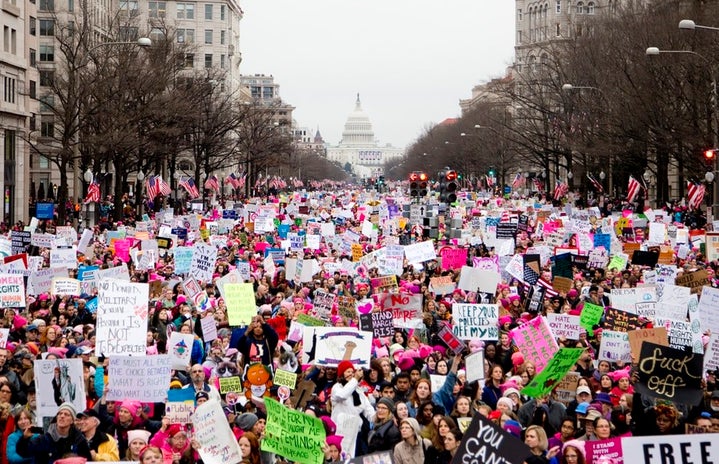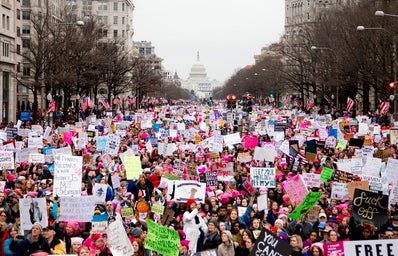Riots and protests have been the means to change across time and the globe. When there is no justice, or there is injustice, peace is no longer a viable option for those on the side of injustice. Those seeking justice often speak out, sometimes peacefully, sometimes violently, but always in search of change. Change is the result of people fighting against the system that is determined to keep them quiet. Recently, following the brutal murder of George Floyd, there has been an uprising calling for change for racial equality all over the world: the Black Lives Matter movement. Black Lives Matter protests are working— change is happening. People are listening, because when there is no justice, and there is no change, people make noise.
- The Boston Tea Party (1773)
-
The Boston Tea Party took place at the Boston Harbor, Massachusetts on December 16, 1773. Three British ships pulled into the Boston Harbor that night, each carrying imported European tea. On that night, 60 rebel colonists, led by Samuel Adams, disguised themselves as people of the Native American Mohawk tribe and boarded the ships. Once aboard the ships, they threw 342 chests of tea into the harbor. The Boston Tea Party was done to protest the British Parliament’s “Tea Act” of 1773, which reduced taxes East Indian Tea Company- so much so, that it gave the company a monopoly on the tea market. The Boston Tea Party led to the creation of the Intolerable Acts of 1774, which were eventually repealed after colonists boycotted trade with Britain.
- The Xinhai Revolution (1911-1912)
-
The Xinhai Revolution took place from October 1911 to February 1912 in China. The revolution took place in order to overthrow the last imperial dynasty of China: the Qing dynasty. The revolutionaries were made up of well educated Chinese people: students, civil servants, new provincial assembly members, and soldiers/officers from the dynasty’s Army. The revolution had started when a bomb had accidentally gone off inside of a secret revolutionaries club, revealing names of members and their intentions. This forced the revolutionaries to act faster than they had intended. The revolutionaries marched forward, capturing large cities and overtaking the Qing army. Much negotiating was done between Sun Yet-san, leader of the Xinhai Revolution who was elected president of the new Republic of China by the revolutionaries during the revolution, and Yuan Shikai, the leader of the Qing forces who later turned on the Qing dynasty to side with the revolutionaries. These negotiations and battles led to the fall of the Qing dynasty on February 12, 1912. Yuan Shikai was made the official leader of the newly born Republic of China.
- Women’s Suffrage Procession and Riot (1913)
-
On March 3rd, 1913, the Women’s Suffrage Procession and Riot took place in Washington D.C. on Pennsylvania Avenue. The Procession was organized and carried out by famous suffragists: Elsie May, Jane Addams, and Reverend Anna Howard Shaw. Over 500,000 spectators looked upon the procession that day, some intoxicated and irritated. The barriers set up for the procession were jumped and trampled over by spectators, and the protestors were attacked. The police feebly attempted to intervene and halt the violence, but were outnumbered by spectators and failed. By the time the riot had calmed down, over 100 protestors were taken to a nearby hospital to treat the injuries they had received. The lack of the Washington D.C. Police Department’s ability to control the riot and protect the protestors was called into question by the U.S. government, and a case was filed to investigate. Elsie May, a front line advocate who was attacked during the protest, testified to a U.S. Senate about the poor protection conducted by the police. Several over witnesses corroborated May’s story. This case led to the firing of the Washington D.C. Chief of Police, on account of negligence for failing to protect the protestors. This riot brought nationwide attention to the movement for women’s suffrage, it was the spark needed to ignite a flame. Seven years following the Women’s Suffrage Procession and Riot, on August 18, 1920, the 19th amendment was ratified, allowing women the right to vote in America.
- The Detroit Riots (1967)
-
The Detroit Riots took place from July 23, 1967 to July 27, 1967 in Detroit, Michigan. In the years leading up to the Detroit Riots, there was growing racial tension in the city of Detroit. In the era of desegregation, many people of color moved the white Detroit neighborhoods in an effort to integrate. However, many white people fled to the Metro Detroit suburbs in response, a phenomenon called “white flight”. This “white flight” phenomenon caused many politicians and businesses to pay attention to the new predominantly white neighborhoods and neglect the predominantly black neighborhoods, leading to poverty and deterioration of Detroit neighborhoods. Since the neighborhoods used to be predominantly white, the Detroit Police Department was also predominantly white. Much of the Detroit Police force was accused of racial profiling and police brutality against the city’s residents of color. At around 3:30am on July 23, 1967, the Detroit Police raided an unlicensed bar on 12th Street in Detroit. Despite the fact that it was late, the streets (and the bar) were crowded with people trying to escape the excessive heat that had come with a heatwave. Over the course of the next hour, the police had arrested 85 patrons and staff members that were present in the bar. During the course of that hour, a crowd of roughly 200 people had gathered around the bar. As the arresting ceased, people from the crowd began to throw glass bottles in the direction of the police. Then, someone threw a brick through the window of a police car, and the riots broke out. They lasted for four days; people set fires, looted stores, and rebelled against police and national guard authority. By the end of July 27, 43 people had died, hundreds were injured, thousands were arrested, and approximately 1700 fires had been set. Following the 1967 Detroit Riots, racial inequalities were making headlines nationwide. The Detroit Riots brought nationwide attention to the racial inequalities, segregation of neighborhoods, neglect from politicians and businesses, and racial tension. The Detroit Riots created a revolution in the city of Detroit to fight for racial equality, and in 1974, Detroit elected its first black mayor: Coleman A. Young.
- The Stonewall Riots (1969)
-
The Stonewall Riots took place from June 28, 1969 until July 1, 1969 at Stonewall Inn in Greenwich Village, New York. Stonewall Inn was a Mafia owned gay bar. The Mafia paid the New York Police Department to “look the other way” about the gay activities going on inside Stonewall Inn, since homosexual behavior and crossdressing was illegal at the time. Despite the bribes from the Mafia, the police raided Stonewall Inn. In the early hours of the morning on June 28, 1969 New York Police raided Stonewall unexpectedly. They violently arrested staff, gay patrons, and anyone deemed wearing “non-gender appropriate” clothing. The police were overly aggressive and rough with patrons in their arrests, angering other bar goers. A crowd of Stonewall Inn guests gathered outside, watching the arrests happen. It is rumored that Marsha P. Johnson, a black drag queen and gay rights activist, started the riot at Stonewall that night, allegedly throwing the first object at the police, but no one knows for sure who started the riots. Johnson did, however, attend the gay rights protests in Greenwich that occurred in the days following the Stonewall Riot. The Stonewall Riots were the first step towards gay rights activism. As a result of the Stonewall Riots, Morris Knight founded the Gay Liberation Front in July of 1969, the first public gay rights activism group. On the one year anniversary of the Stonewall Riots in Greenwich, the Gay Liberation Front held the first ever gay pride parade. Today, there are gay pride parades held all over the world on the anniversary of the Stonewall Riots. Stonewall was a major turning point for the lgbtq community: lgbtq people would no longer have to hide who they are, instead they would fight for their rights to be who they are.
Riots and protests, violent and peaceful alike, have brought immense change throughout history. The Black Lives Matter protests that have been happening recently will one day be historical events. Change is happening, things are changing even as you read this. Protests work. Black Lives Matter protests will work, because when you make noise, people listen.
Sources
https://www.history.com/this-day-in-history/the-boston-tea-party
https://schoolhistory.co.uk/notes/xinhai-revolution/
https://www.ourdocuments.gov/doc.php?flash=true&doc=63
https://www.history.com/topics/1960s/1967-detroit-riots
https://detroithistorical.org/learn/encyclopedia-of-detroit/uprising-1967
https://www.youtube.com/watch?v=Q9wdMJmuBlA
https://www.nyclgbtsites.org/site/gay-liberation-front-at-alternate-u



